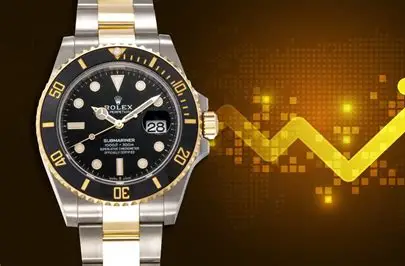Luxury Watch Market

The Case for Luxury Watches
Luxury mechanical timepieces — especially from brands such as Rolex, Patek Philippe and Audemars Piguet — increasingly have been treated not just as wearable accessories but as alternative assets. The reasoning: limited production, strong brand desirability, mechanical craftsmanship, and growing global demand (especially in emerging markets) can lead to price appreciation in the secondary (pre-owned) market. HIM Business School+2Gentleman's Gazette+2
For collectors and investors alike, watches have been part of a broader “passion asset” category (alongside vintage cars, fine art, wine) that may offer diversification beyond stocks and bonds.
What the Numbers Show
While tracking is imperfect, here are some of the more concrete data points:
- One longer-term tracker: a “value watch” basket of 30 carefully selected models (from 2013–2025) achieved an average compound annual growth rate (CAGR) of about +9.5 % per year. Over that ~12-year span the basket more than doubled in value. Jamais Vulgaire
- On the broader market: the WatchCharts Overall Market Index shows a max historical return of +67.6 % (since its inception) and a 5-year AAGR of +7.2 % as of Nov 2025. WatchCharts+1
- Brand-specific data: Bob’s Watches reports that average Rolex resale prices rose from ~US$2,000 in 2010 to ~US$13,426 in 2025 — an increase of ~550 %. Bobswatches.com
- Broader comparison: An article noted that over a 10-year period, luxury watches delivered ~9 % annualised returns and rose ~147 % overall, out-pacing vintage cars (+118 %) and diamonds (+13 %) in that window. The Economic Times
Bringing the 25-Year Lens Into View
Although many data sets cover ~10–15 years, extrapolating to a 25-year horizon suggests that a well-chosen luxury watch could realistically yield an average annualised return in the ballpark of 8–10 % per annum, provided one picks the right model, maintains condition, and holds for the long term.
For example: an initial purchase of US$5,000 with a 9 % annualised return over 25 years would grow (ignoring costs) to around US$5,000 × (1.09)^25 ≈ US$46,000. That’s illustrative, not guaranteed.
Risks, Drivers & Caveats
Important to stress: the performance is highly model- and brand-dependent, and many watches will not deliver those kinds of returns.
Key considerations:
- Model scarcity & desirability: Watches with limited production, strong heritage, and collector demand (e.g., discontinued steel sports models) tend to outperform. Jamais Vulgaire+1
- Condition, provenance & servicing: A watch in mint condition with full documentation will command a premium; maintenance and service costs eat into net return.
- Liquidity & market cycles: Unlike stocks, watches can require significant time to sell, may incur high transaction costs, and are more exposed to shifts in style, hype, macro-economics. For example, after the market peak in early 2022, many secondary watch values declined. WatchGecko+1
- Entry timing matters: Buying at peak hype may reduce upside; holding for decades tends to smooth out volatility.
- No dividend/cash flow: Watches don’t generate income (no coupons, dividends) — the return is purely from capital appreciation and enjoyment.
- Alternative asset status: They are best treated as part of a diversified portfolio rather than the core investment thesis.
Conclusion
For the right watch — from a top brand, in desirable model/spec, held long-term, and properly maintained — luxury watches have shown credible investment returns over the past decade or more (8-10 % per annum is a reasonable historical guide). Over a full 25-year span, that means the potential to multiply capital by 5–10× if you pick wisely.